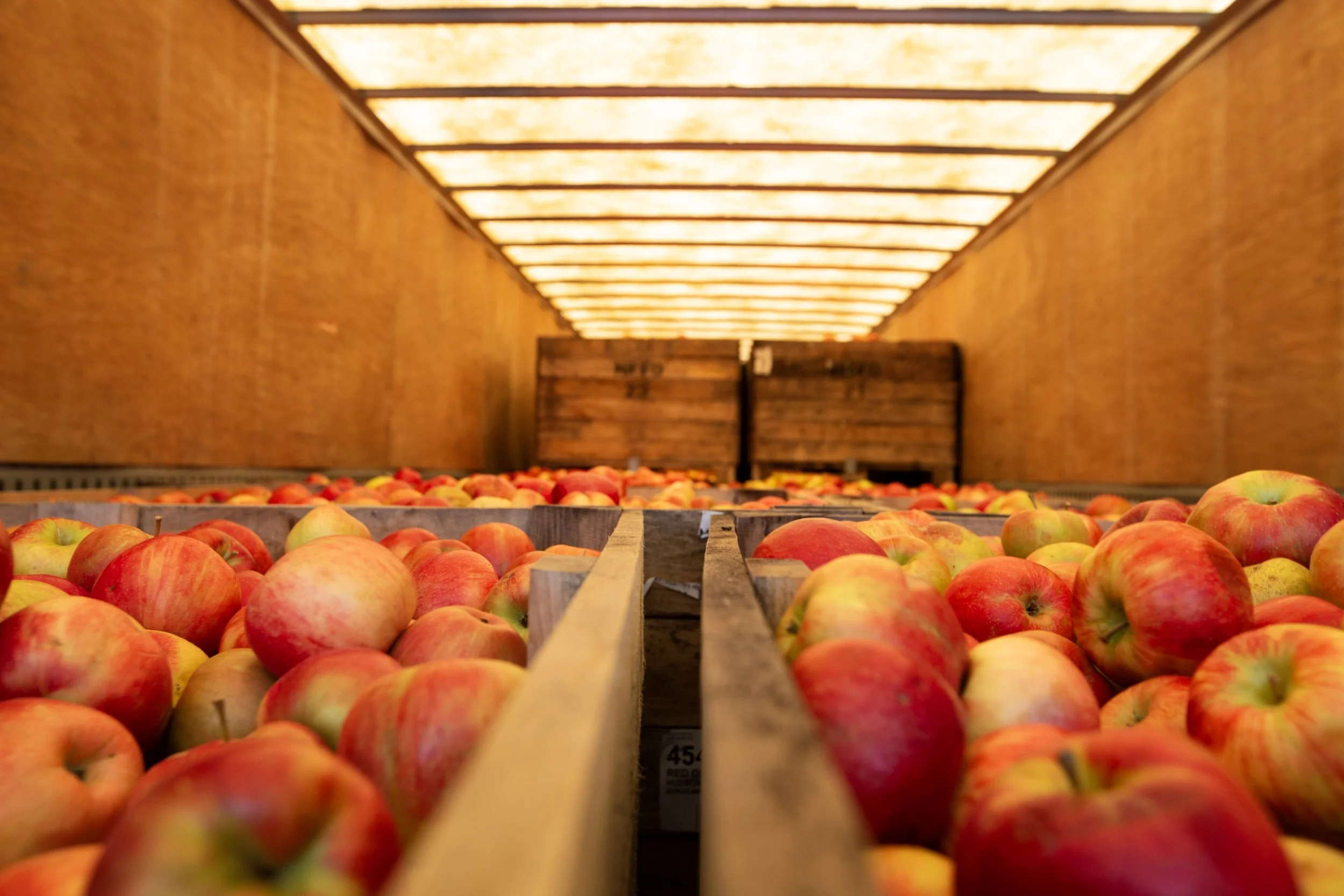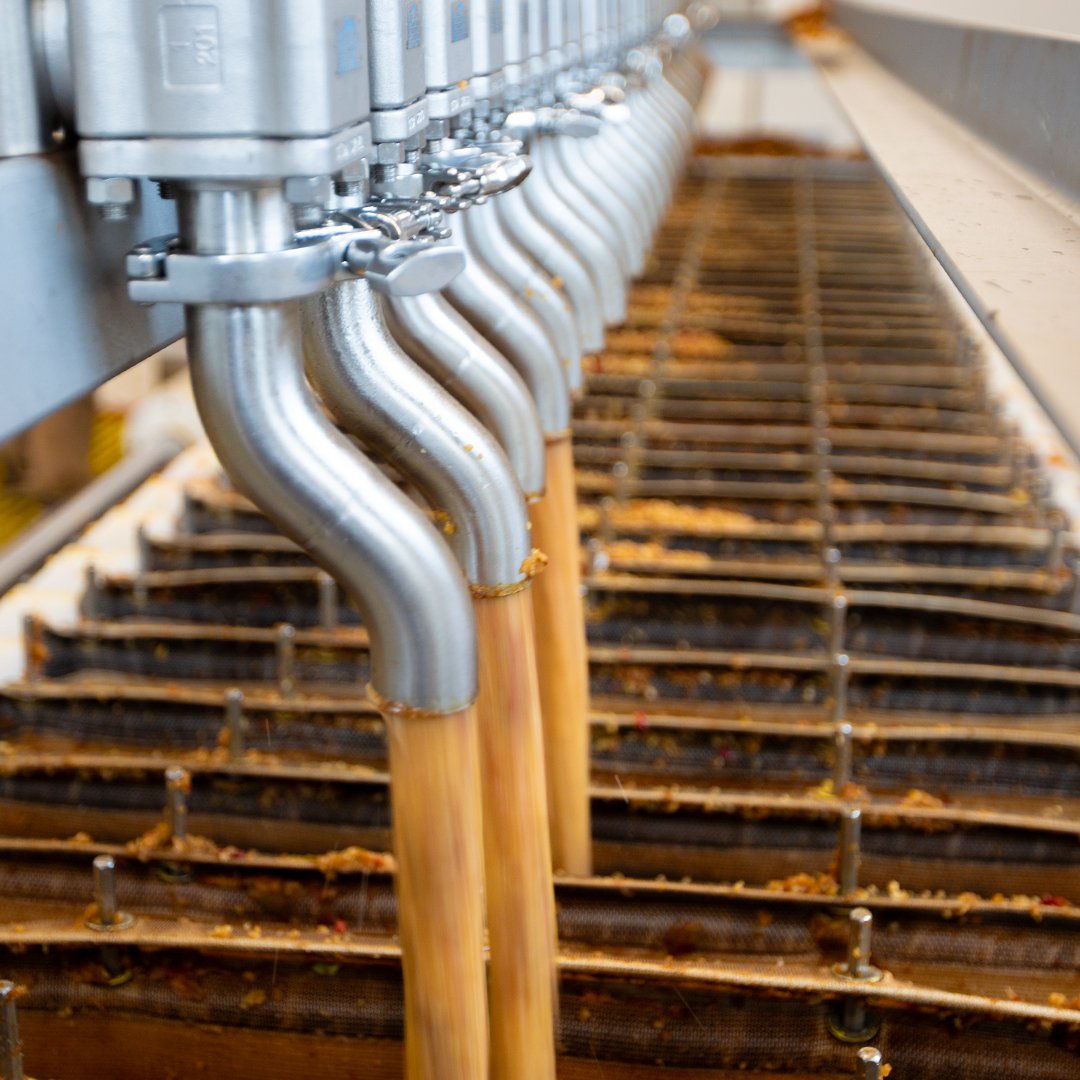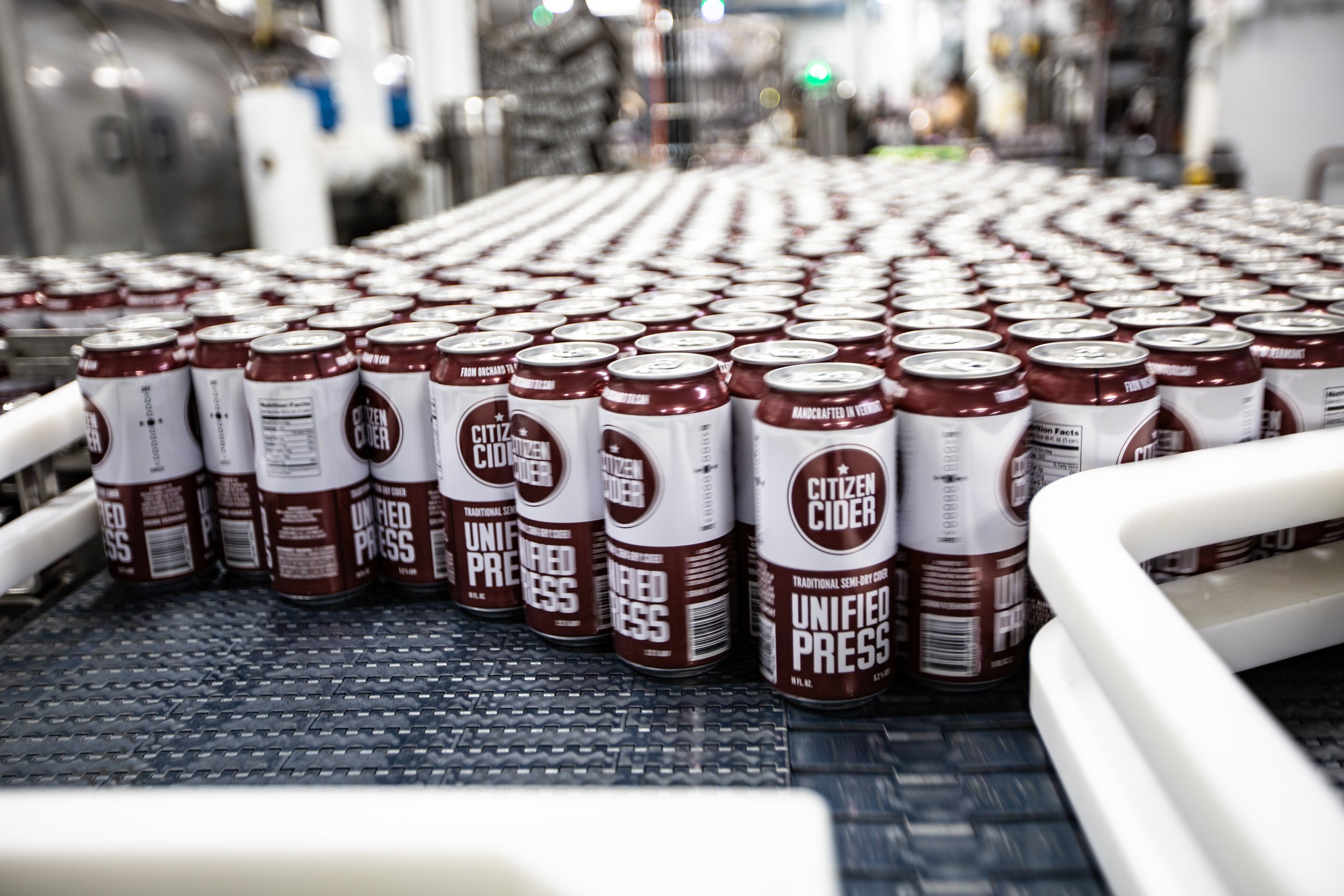From Orchard to Can.
Bins waiting to be filled with the apple harvest at one of our partner orchards in New York.
The production of our ciders starts with a diverse variety of VT and NY grown fresh apples that are pressed in-house to create a rich, sweet apple juice. We bring them in by the truck load.
Apples that just arrived on the truck.
Apple mash being pumped into the press bags.
The remaining dry apple pieces are called pomace, which gets discarded and sent to local animal farms for pig feed. It takes about 11 pounds of apples to get 1 gallon of apple juice.
We process these apples at our pressing facility on Flynn Ave. in Burlington, VT. We press about 13 million pounds of apples per year; 1,200 gallons of fresh apple juice per hour. Our apples go through washing rollers, a grinder to crush them into apple mash, and then into our press bags to squeeze every drop of juice out that we can.
Our Lead Press Operator making sure everything is as it should be before pressing.
Fermentation vessels where the sweet cider ferments into hard cider.
To start the fermentation process, yeast is added to the apple juice and the native sugars (sugars naturally found in apples) are converted to alcohol, also known as ethanol. Some products, like Unified Press, use native sugars to balance the sourness that becomes increasingly present as the yeast lowers these sugar levels in the fermenting cider.
To balance sweetness with sourness, we maintain native sugars in the cider as the source of sweetness using a process call “Stop Ferm” where the yeast is removed from the fermenting cider using filtration equipment.
After a short aging time, the cider is carbonated and packaged for your enjoyment!
Our flagship cider, Unified Press, just coming off the canning line, waiting to be packaged.
Our Quality Assurance Tech making sure everything is as it should be with our pasteurizer.
Between batches of products, our production team performs a variety of environmental cleaning tasks that include 1) cleaning and sanitizing internal tank surfaces, and other equipment, to remove all potential contaminants, such as yeast and bacteria and 2) applying cleaning and sanitizing agents to the floors and walls and physically scrubbing the areas for general maintenance.
Our Quality Assurance team uses a suite of chemical analysis to ensure that our ciders are free of contaminants, such as yeast, bacteria and gluten in our packaged products.
Virtual tour of our facility.
COMING SOON. CHECK BACK IN THE NEAR FUTURE.







